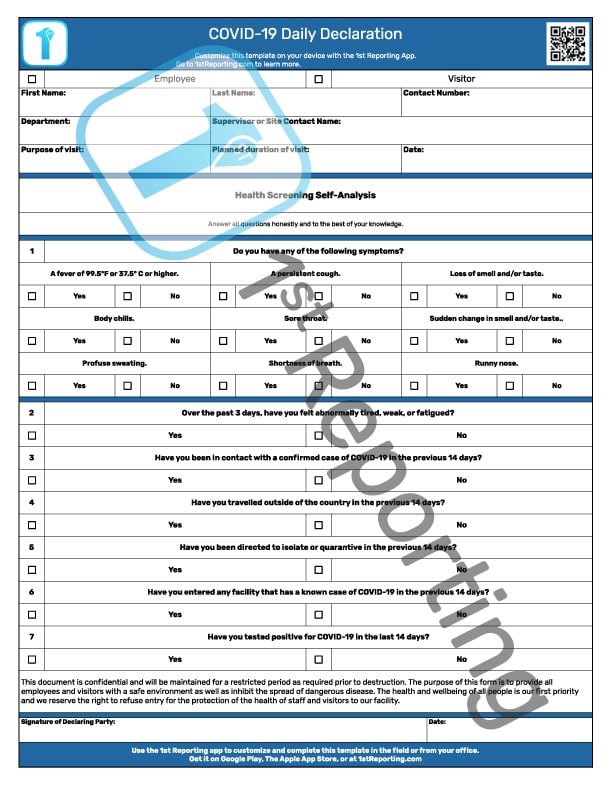Classroom observation checklist templates are necessary for completing the documentation of a classroom observation process. The observation process works to help educators do several things, including maintaining educational standards, best practices, and methodologies. Similarly, it allows teachers to learn how to improve their teaching practices for better results.
A Classroom Observation Checklist provides educators with insights into teaching practices, adherence to curriculum, and other vital information for improving the quality of the educational experience.
We’ll give you a free downloadable and printable PDF version of our Classroom Observation Checklist. We’ll also include a handy guide for effective observation and documentation. From institution to an organization, we’ve got you covered. Let’s dive in.
Included in the Classroom Observation Checklist
Our Classroom Observation Checklist has six primary components, each divided to create a flow to the observational methodology. Here is a brief description of each element of the checklist and the intent behind each.
Administrative
The administrative section of the checklist is relatively self-explanatory. It provides basic background information about the observation date, who is involved, and further information, such as an observation report number you can use for filing and organizing your observational reporting.
Content Knowledge
The Content Knowledge segment of the Classroom Observation Checklist includes key indicator queries relative to documenting the educator’s knowledge of the presented content. Relative command of the subject matter is critical to showing confidence in the required learning, a necessity for providing an excellent example for students. After all, if an educator knows the information they teach, it can be manageable, and students will immediately lose most or all of their interest.
Organization
The Organization section of the checklist pertains to the organization of the lesson presented by the educator. It indicates how well the educator tailors the pace of the lesson to the intended audience and further observations that shed light on the educator’s ability to organize their lesson content effectively.
Presentation
Following the COPI model (more about that later), the Presentation segment of the Classroom Observation Checklist pertains to the educator’s presentation of information within the lesson. The section includes things like the clear enunciation of points, the applicable inclusion of topics and explanations, and other aspects of the presentation.
Interaction
The Interaction section of the checklist includes observational points about the interaction or involvement of the students. People often assume that an inquisitive, engaged, and interactive student shows the quality of the presentation of material offered by the educator. The interaction of students is often thought to be a key indicator of the ability of an educator to present information in a way the student will gain interest in and thus retain. This section of the Classroom Observation Checklist pertains to these interactions and documenting their observation.
Notes and Sign-Off
No review or even observational event documentation is complete without a sign-off from the person completing the report. Similarly, our Classroom Observation Checklist includes such a section at the end and an area for the observer to have further notes, comments, or suggestions for lesson improvement.
Classroom Observation Methodology

Observation within a classroom is critical to the evolution of effective teaching and learning processes. An observation checklist is a perfect tool for documentation of the observation/action approach to evolving techniques for more effective instruction and outcome. According to the Center for Educational Leadership, the University of Washington, College of Education, there are three primary types of observations within the classroom.
- Learning Walkthrough – Leadership roles focus on specific dimensions of the educational process, for example, Student Engagement Curriculum.
- Goal Setting and Implementation Walkthrough – Leadership roles focus on goals and implementation of curriculum and other practices.
- Supervisory Walkthrough – Leadership roles focus on the teaching process, student performance, and leadership actions and accountability.
In order to account for each of these types of classroom observations, we’ve focused our considerations on the general Classroom Observation Checklist. For simplicity, our observation checklist follows the COPI format: Content Knowledge and Relevance, Organization, Presentation, and Interaction.
Content Knowledge – Focuses on materials presented and the presenter’s command of the topic’s knowledge, conventions, and aspects. It would be best also to consider the relevance of the materials presented to the curriculum requirements.
Organization – Focuses on the presenter’s organization of materials and information. The observer considers presentation sequence, timing, relevance, and summarization.
Presentation – Focuses on the display of materials and information. This section heavily focuses on the presenter’s ability to educate and present facts and information in a way conducive to learning, following the curriculum, and best practices of the institution.
Interaction – Focuses on the student’s interaction with the presenter and instruction. This section significantly focuses on the presenter’s communication ability with a focus on both listening and answering queries posed by students.
How To Use The Classroom Observation Checklist
To effectively use the Classroom Observation Checklist, we recommend following the institutional standard three-stage observational process. We’ll describe the concept behind this process in the following section. All you need to do to get started is download and print the checklist for use. However, we’ve also got the same solution in a digital format in the 1st Reporting App. Available on this website, on Google Play, and also on The Apple App Store, the 1st Reporting app is your digital solution for documenting inspections, incidents, and observations. It’s easy to use and helps you keep the paper to a minimum. But let’s talk more about the stages of classroom observation, so you can keep your observational process working effectively.
Stages of Classroom Observation
Many institutions followed a staged approach to classroom observation. For example, many institutions follow a 3-step consultative approach. This approach includes a pre-observation conference between the observer and educator. The pre-observation conference typically consists of a discussion concerning teaching goals, style, and observations about the class’s students.
The second step of the default process includes the classroom observation act itself. This act is the concern of our checklist, and the intent is to use the Classroom Observation Checklist for documentation of the critical observations during the second stage of classroom observation.
The final stage of classroom observation includes the post-observation conference. This post-observation conference consists of a discussion between the observer and educator to convey the observations noted during the second stage of the classroom observation process.
Using our checklist works well for documentation of the second stage or in-class observation of the instruction.
The Purpose of Classroom Observation

You might be wondering why we need classroom observation in the first place. There are two primary reasons why classroom observation events must occur.
- School administrators want to ensure that the appointed curriculum, teaching style, and guidelines align with expectations. This sort of job performance review happens for all new educators and sometimes for existing educators to fine-tune or improve lesson delivery methodology.
- Peer-to-Peer observation occurs because an educator voluntarily requests observation to improve lesson delivery methodology. This observation usually happens when a new technology for lesson delivery becomes available, and educators want to test inclusion before committing to further adoption. Similarly, educators adopting unique teaching or presentation styles may wish to have a peer ‘sit-in’ on a lesson and provide feedback to the educator.
As you can reasonably conclude, the overall purpose of classroom observation is to improve lesson delivery and, thus, student outcomes. If there is one primary goal, that is a subsequent goal of the educator perfecting their lesson delivery.
The Best Tool For Documenting Observations
We hope that our checklist helps you with your classroom lesson observations. However, suppose you want a more robust solution that the institution can use for every type and form of reporting – from incidents to classroom observations. In that case, you need to hear about 1st Reporting.
1st Reporting is our solution to the paper checklist and form. With our robust digital reporting solution, you and your fellow educators can efficiently perform classroom observation documentation and share your results accordingly. Our app works on desktop computers, laptops, tablets, and even your smartphone – making it one of the most versatile observation documentation tools.
Several features can help you streamline the documentation of incidents, events, or even lesson observations. The app is versatile, with a custom form builder that enables you to create dynamic forms for any conceivable purpose. You will wonder why you ever used paper checklists or forms in the first place.
But don’t take my word for it – try the 1st Reporting app yourself and see how powerful a digital reporting platform can be for your institution.





